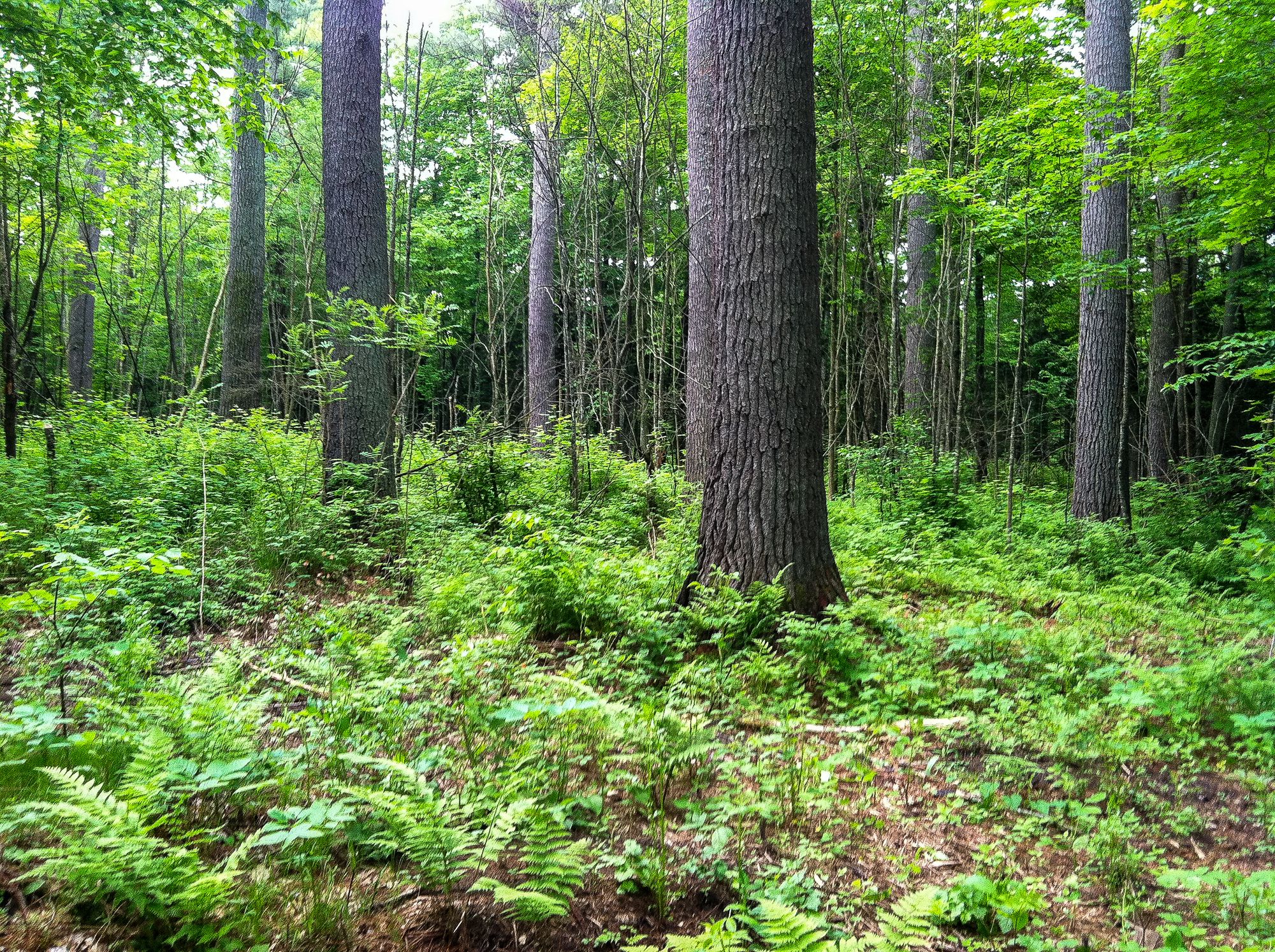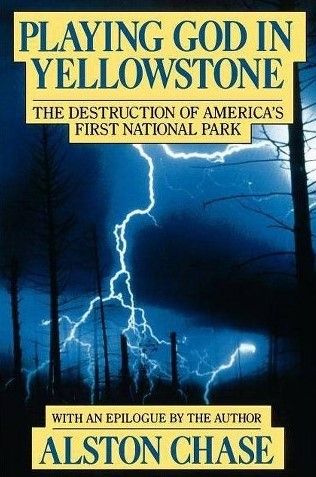Another Giant Gone: Gene Yahvah, 1926-2023
Gene Yahvah died in Libby, Montana on May 23, 2023, his ninety-seventh birthday. He was a legend among Montana foresters

There is nothing "new" or "normal" about the wildfire pandemic that is sweeping across forests in the western states.
I will readily concede that our nation's westward march - now in its 177th year- is part of the problem. "Gee whiz, if we didn't have all people living out here in the West it would be easier to deal with these wildfires."
Yes, it would, but there are more than 78 million of us living in the 11 western states. And more are on the way.
The much larger problem has been the politicization of problems that continue to rise from our nation's long ago desire to extend its eastern agrarian roots to the west coast - a distance of some 2,800 miles through uncharted lands.
Lewis and Clark went first with the blessing of President Jefferson. He had secretly asked House and Senate members for $2,500 for the expedition. About $65,000 in today's dollars. Hardly enough but enough to fire the imaginations of countless explorers, industrialists and pioneers who streamed west after Texas gained statehood in December 1845.
The history here is long and torturous, not least because it led to a string of treaties with Indian governments that were broken by the often brutal force of western expansion. In hindsight, there was a great deal we could have learned about land management from Indian tribes had we been honest dealers. But we were not and it remains a shameful period in our nation's history.
Tribes own about 18 million acres of timberland in the U.S. Their forest management practices are exceptional. We know this because we've been working with the Intertribal Timber Council for 25 years.

Tribal use of fire for hunting and agricultural purposes - and now in their forestry operations - is detailed in all three editions of Forestry in Indian Country posted in our website archives that summarize the state of tribal forestry in the U.S.
A couple of highlights from our most recent report: Forestry in Indian Country: Solving Federal Forestry's Rubik's Cube:

I've never found a description of what forestry should be that is as powerful or easily understood as these 50 words of wisdom - and we have more than 1,000 forestry books in our Evergreen library. How unfortunate that the U.S. Forest Service did not embrace Oshkosh's foresight decades ago.
Nothing in the federal forestry world today bears the slightest resemblance to tribal forestry or Oshkosh's almost biblical instruction, but it's never too late to beg for forgiveness and make a fresh start.
The Forest Service's misuse of fire in New Mexico, beginning this spring, is simply astonishing. As of July 6, the Hermits Peak and Calf Canyon fires have burned 341,735 acres. By what stretch of imagination can anyone justify purposely setting a fire that has now blackened 534 square miles? This is an area 43.5 percent larger than the combined size of New York City and its five boroughs.
No American Indian tribe would do what the Forest Service is doing - and tribes have been using fire to manage land from coast to coast for thousands of years.
We hope you will study the forest and practices of our indigenous citizens in our on our Anchor Forests page. There are also 4 short videos on the same page that feature tribal members discussing the practice and application of tribal forestry.
Apart from gaining a great respect for what tribes have endured since Manifest Destiny was first described in a John O'Sullivan essay in 1839, you will be exposed to the reverent Indian connection to land and place.
Such reverence is uncommon in our society today, though many private forest landowners and states hue closely to many tribal forestry principles, including a belief that it is possible to successfully balance economic and environmental goals and objectives in the same forests.
We drilled deeply into this business of balancing seemingly conflicting objectives in a 1990 interview with Alston Chase, a gifted college philosophy professor who turned to freelance writing to explore progress in conservation.

In his first book, Playing God in Yellowstone, he planned to chronicle the good work conservationists had done in Yellowstone National Park. But the deeper he dug into their legacy, the more he realized they were destroying the park.
"I had stumbled on to a real tragedy about how misguided ideals were destroying Yellowstone," Chase said. "In some instances, the movement's lack of an ethical standard reached shocking and appalling proportions. They believe their cause is right, just and good and that they have the moral high ground. In their view, the end justifies the means."
In 21 painstakingly researched chapters, Chase traced the park's early history, the changing management philosophy, the evolution of the environmental movement and its relationship with the National Park Service and the whispered declines in populations of grey wolves, deer, mountain lions, lynx, bobcat, wolverine, fisher, grizzly bears, black bears, bighorn sheep, mule deer and beavers.
"With each new discovery of a wildlife species pushed to the brink of extinction, I asked myself, 'Where are the environmentalists?' In the end, I realized that they had been there all through most of the destruction and that they were largely responsible for what happened in Yellowstone."
In "Yellowstone Elegy," the final chapter in his 1987 book, Chase wrote, "Actions of environmentalists in Yellowstone reflected the religious, scientific and political insights that emerged from the redwood think tanks of California during the past two decades.
"In their unquestioned acceptance of the principle of noninterference, environmental activists in the northern Rockies embodied the major insight of deep ecologists. In their ritual use of the word 'ecosystem' and explicit adoption of 'bioregionalism,' they joined with the California Cosmologists in expressing belief in the interconnectedness of things, at the same time remaining ambivalent about traditional science.
"By insisting that nature always knows best, by wrapping the world in ineffability, they provide a rationale for doing nothing. In their preference for land-use issues over wildlife problems, they sought political solutions to biological questions. Attracted to activism, coalition building and co-option, they created an alliance with bureaucrats that stifled debate on wildlife issues."
Playing God got Chase invited out of the movement he set out to extol but it opened the door to a new career as a syndicated columnist. He was writing for more than 50 daily newspapers before he discovered that several news editors were illegally rewriting parts of his essays that they found offensive.
Here's a sampling of what gave them heartburn:
Environmentalism increasingly reflects urban perspectives. As people move to cities, they become infatuated with fantasies of land untouched by humans. This demographic shift is revealed through ongoing debates about endangered species, grazing, water rights, private property, mining and logging. It is partly a healthy trend, but this urbanization of environmental values signals the loss of a rural way of life and the disappearance of hands on experience with nature. So the irony: as popular concern for preservation increases, public understanding about how to achieve it declines.
When we caught up with Chase at an environmental conference in Portland, Oregon two weeks after the federal government announced its 1990 decision to list the northern spotted owl as a threatened species, we asked him what the lesson was in Playing God in Yellowstone. Here is his verbatim reply:
In a perfect world, environmental groups and industries would agree on the need to develop ecological sustainable economies. You would think that we could agree on this very fundamental principle.
Preserving culture - society's institutions and individual rights - is the first step to preserving the environment. In our efforts to save nature, we should not lose ourselves. Emotions should be guided by reason.
The use of politically charismatic wildlife species as a strategy to lock up land under the authority of the Endangered Species Act is scientifically incorrect and intellectually dishonest.
The drumbeat begins with selection of a charismatic species. Then the public is scared into believing that if the species disappears they're next. The public sends money to the cause.
There is the presumption that the only way to save the species is to lock up more land when, in fact, by not allowing resource managers to actively manage wildlife habitat, the policy of locking up land often leads to less biological diversity.
But to your direct question, the lesson in Playing God is that there is no such thing as leaving nature alone. People are part of creation. We do not have the option of choosing not to be stewards of the land. We must master the art and science of good stewardship. Environmentalists do not understand that the only way to preserve nature is to manage nature."
Thirty-two years hence, Alston Chase's searing assessment of the environmental movement he championed in his years as a college professor is still on target. But the damage the anti-forestry mob has done to western forests and communities is millions of acres greater than it was in 1990.
So, too, is the damage done by the Forest Service's current wildfire policy, which implies that mechanically thinning selected trees does more environmental harm than a stand-replacing wildfire. For every study that supports this crazy idea, I can show you 10 that don't. And I can show you hundreds of before and after pictures of the kind of thinning work that needs to be done in diseased forests. Thinning first, then prescribed fire. Tool No. 1 and Tool No. 2. Works every time.
States, tribes and private landowners have been using these tools for decades to protect their forests from insect and disease infestations. And inevitable wildfire.
The Forest Service used these tools in the Intermountain West for years following World War II. Now they don't - and now more than half of the 193 million acres in their care is dying. And millions of acres and several communities have been lost in killing wildfires. What happened? Why has the agency forsaken decades of its own applied research?
We'd like to say that the Forest Service takes responsibility for this damned mess, but they don't. It belongs to the cosmic deep breathers that Alston Chase described in Playing God. They are still playing god, they are not being transparent, and they need to own it.
You 100% tax-deductible subscription allows us to continue providing science-based forestry information with the goal of ensuring healthy forests forever.